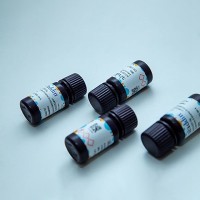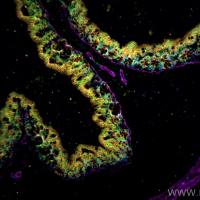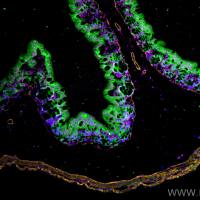The mammalian mitochondrial genome contains 37 genes, 13 of which encode polypeptide subunits in the enzyme complexes of the oxidative phosphorylation system. The other genes encode the rRNAs and tRNAs necessary for their translation. The mitochondrial translation machinery is located in the mitochondrial matrix, and is exclusively dedicated to the synthesis of these 13 enzyme subunits. Mitochondrial disease in humans is often associated with defects in mitochondrial translation. This can manifest as a global decrease in the rate of mitochondrial protein synthesis, a decrease in the synthesis of specific polypeptides, the synthesis of abnormal polypeptides, or in altered stability of specific translation products. All of these changes in the normal pattern of mitochondrial translation can be assessed by a straightforward technique that takes advantage of the insensitivity of the mitochondrial translation machinery to antibiotics that completely inhibit cytoplasmic translation. Thus, specific radioactive labeling of the mitochondrial translation products can be achieved in cultured cells, and the results can be visualized on gradient gels. The analysis of mitochondrial translation in cells cultured from patient biopsies is useful in the study of disease-causing mutations in both the mitochondrial and the nuclear genomes.






